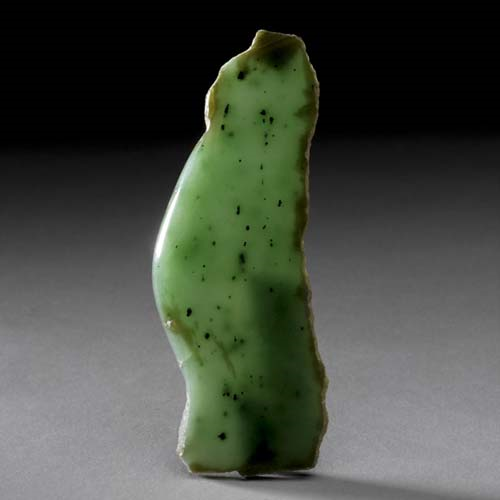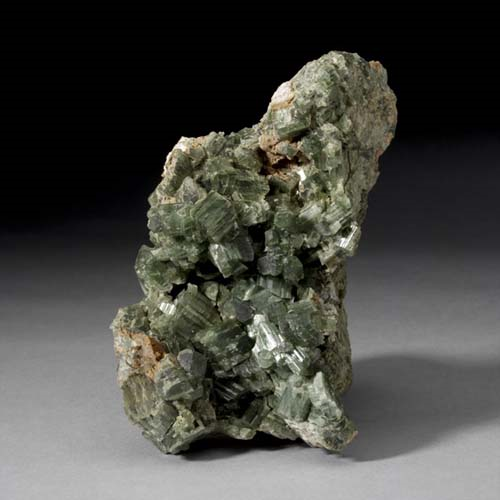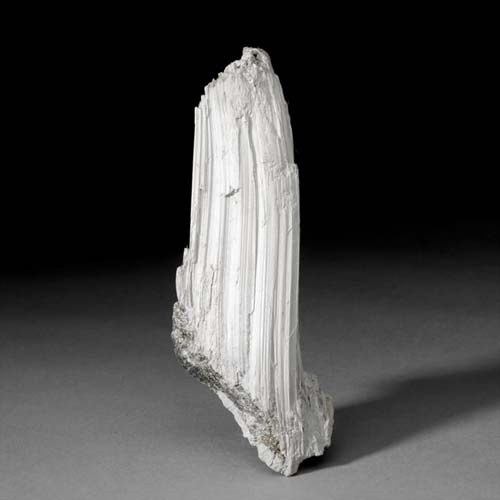Actinolite (Nephrite) - Ca2(Mg,Fe2+)5Si8O22(OH)2
Double-Chain Inosilicates




Habit: Usually green, but can range from white to gray to black. In euhedral crystals, short to long prismatic, but more commonly bladed crystals or in aggregates, as radiating groups; compact, tough aggregates of short, tightly interlocking fibers with subparallel alignment. Vitreous to silky luster; transparent to translucent. White streak.
Environment: Produced by low-grade regional or contact metamorphism of magnesium carbonate or mafic or ultramafic rocks; also occurs in glaucophane-bearing blueschists.
Etymology: From the Greek for "ray," in allusion to the mineralís common radiating fibrous habit. Nephrite comes from the Latin for kidney, in reference to its alleged beneficial effect in kidney ailments.
Nephrite is a form of actinolite and one of the two mineral species called jade. Nephrite can be found in a translucent white to very light yellow form known in China as mutton-fat jade. It also occurs as an opaque white to very light brown or gray known as chicken-bone jade, as well as a variety of greens. Nephrite is used as an ornamental stone for beads, carvings and jewelry.